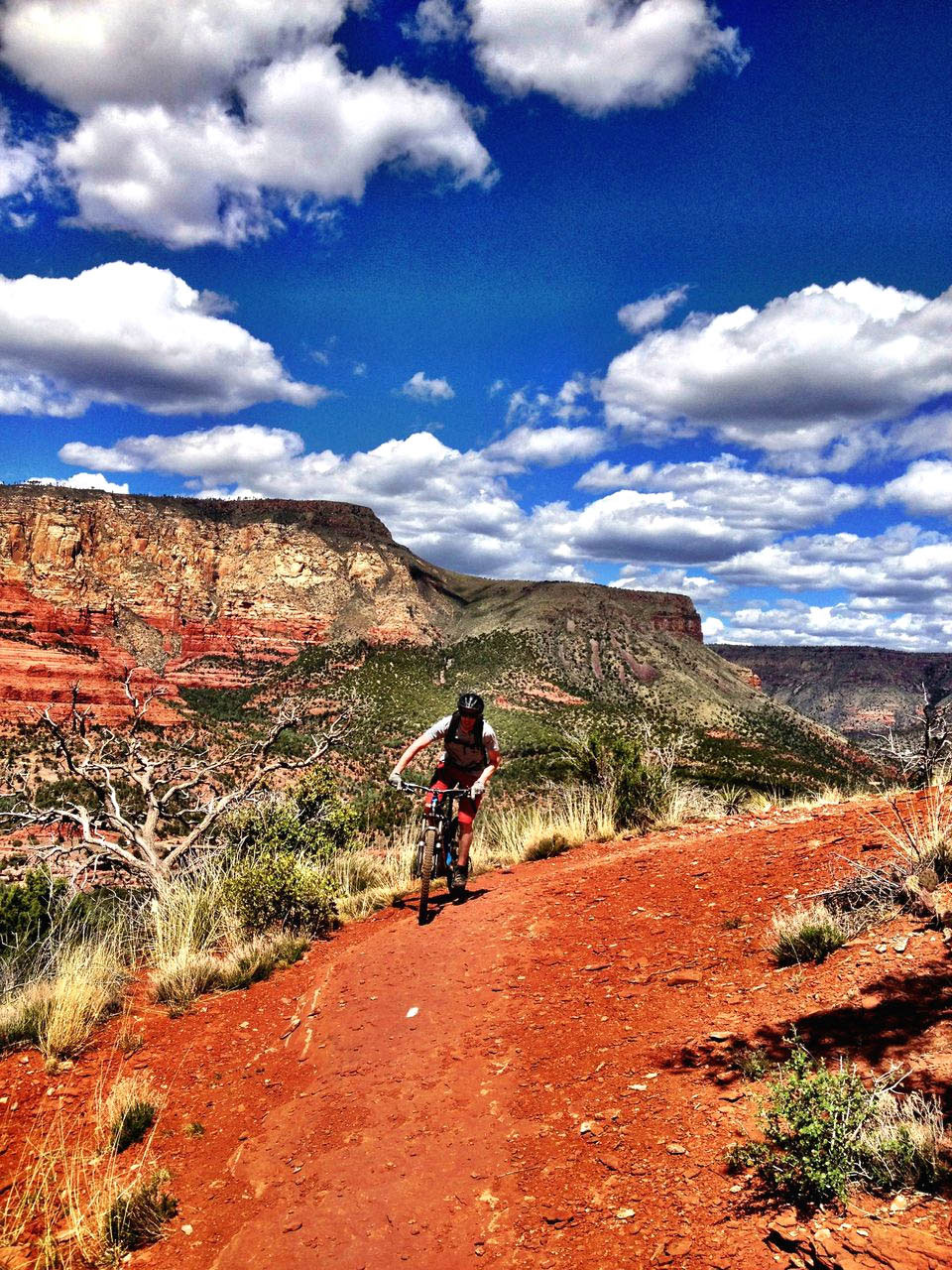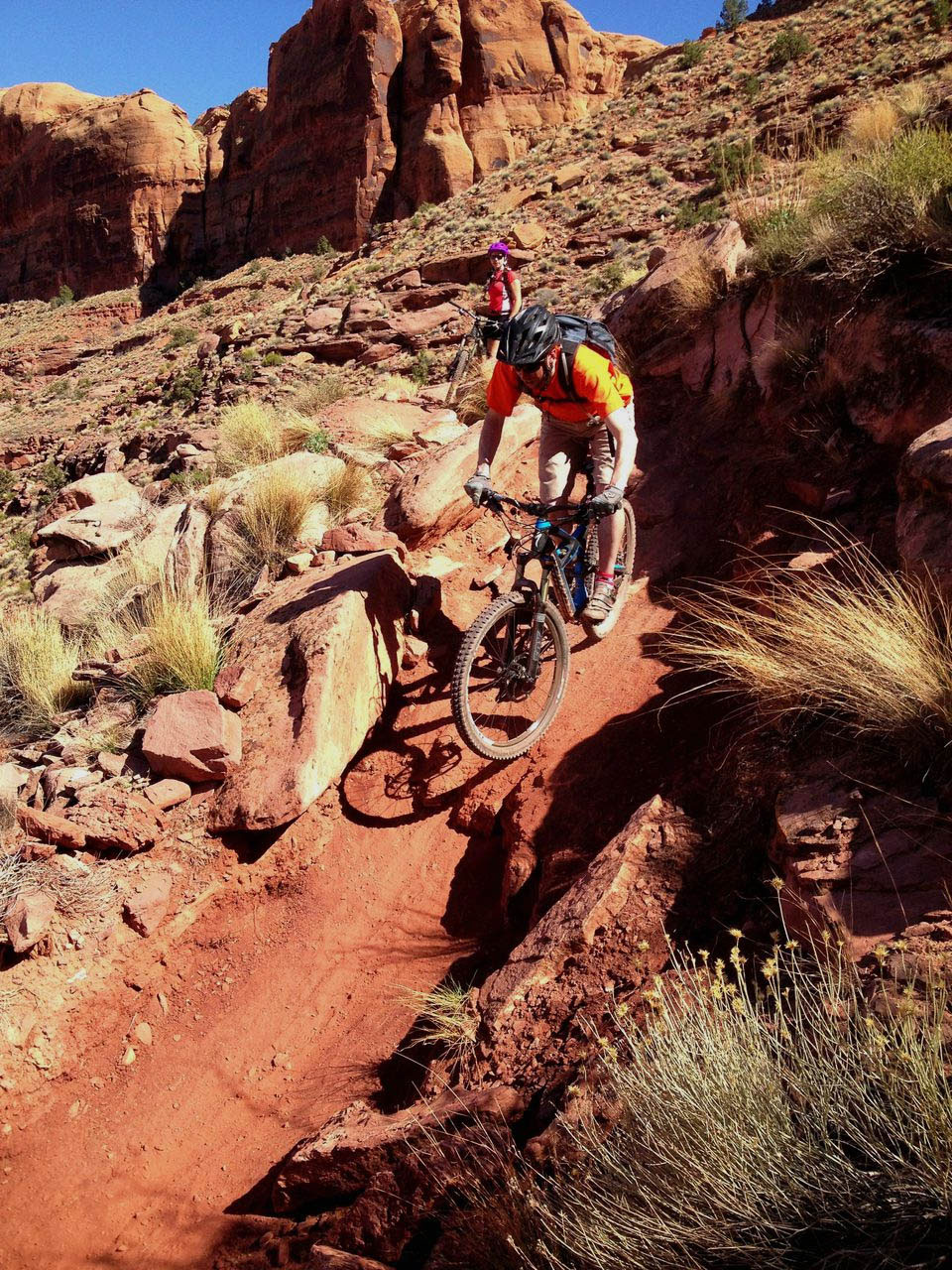“C” / Climb
The only one of the three settings that has worked well for me is “Climb.” It adds a lot of compression damping, meaning the fork moves only on fairly significant impacts. Still, I actually use this setting very rarely. If I were doing lots of out-of-the-saddle sprints up dirt roads, I’d be psyched on it. Of course, if I were doing lots of dirt road sprints, I probably wouldn’t be using a fork with 160mm of travel, either….
If I’m doing a long climb, I’m usually just sitting and spinning. This doesn’t result in a whole lot of fork movement, regardless of the compression settings. For that reason, it’s fairly rare that I feel the need to switch the fork into “climb.”
“T” / Trail
The “Trail” setting is supposed to provide some low-speed compression while still remaining supple for large hits, but in reality, it essentially renders the fork semi-useless. This setting is over damped at the beginning of the stroke, which means that it has absolutely no small-bump compliance.

In theory, this damping curve would provide excellent support for cornering; in practice, however, it offers more support than necessary and gives up a lot of ground on what the fork is intended to do: absorb bumps.
The Trail setting still works alright for absorbing big hits, and thus it works better (if not well) at higher speeds.
“D” / Descend
The “Descend” setting is where I leave the fork 90% of the time—not because I’m a big fan of the descend mode, but because I find it to be the least bad for ordinary trail riding.

The Descend setting has too little compression damping through virtually the entire stroke. This means the fork dives deep into its travel during braking, cornering, or really any occasion where you might think to yourself, It sure would be nice if this fork wasn’t diving right now.
The Descend setting also lacks support in the midstroke to push off or pump the fork. This becomes a liability when I want to rapidly shift my weight upward and backward, like when I’m trying to lift my front wheel over an obstacle.
Rather than provide some support for this movement, the fork wallows into its travel, which in turn leaves my weight down and forward. This will occasionally lead to me clobbering a rock that I wanted to lift my front wheel over. I’m not going to pretend that there isn’t any rider error involved in these sorts of situations, but the fork isn’t doing me any favors, either.
To compensate for this diving effect, I put more air pressure in the fork than I normally would. This leaves me with thoroughly mediocre small-bump compliance and equally mediocre mid-stroke performance, but at least the fork dives a little bit less.
Further Thoughts on the CTD System
First and foremost, if I’m purchasing top-of-the-line suspension like the 34, I want to be able to make it ride like I want it to. With the CTD damper, I have no ability to dial in the fork to my preferences.
Furthermore, even if the engineers at Fox had somehow managed to get the settings on the CTD just right for my preferences … my preferences sometimes change. I will occasionally adjust my fork settings for specific situations. I might tweak the compression damping slightly if I’m on a smooth, bermy jump trail rather than a rocky, chundery trail. With plenty of forks out there (including older Foxes and current Fox 36 models), this was as easy as turning a knob a couple of clicks. With the CTD, the option is gone.
Second, if some riders are having trouble dialing in their suspension, the solution should not be to take away their ability to do so, it should be to teach them how to do it.
There’s no question that damping adjustments can be a bit confusing. In this age of the Internet where people keep asking whether brick and mortar bike shops still have a place in the market, this is a prime example where the answer should be a resounding YES. If you can’t figure out what knob does what on your fork, a good local bike shop can help you through the process.
Finally, Fox’s idea to make suspension less adjustable is far from revolutionary; low-end suspension has had limited adjustability since the beginning. But an increase in adjustability has always been an upgrade—people have always paid more for an increased level of tune-ability or customization. The lack of adjustability here feels regressive.
This is not to say that having a lever that can radically change suspension performance on a moment’s notice is a bad thing. Quite the opposite. While I’m more of a “set it and leave it” kind of guy, I fully recognize the benefits of something like the CTD. Being able to quickly make the fork climb better, descend better, or hit a nice middle ground is a fantastic option. But when that option comes at the cost of all tuneability, for me it’s not even close to worth it.

I’m pleased to report that the Fox 2014 CTD damper is not quite the over – underdamped spiking piece of crap that is the lamentable 2013 dungheap. Sorry to 2013 CTD buyers. who got the raw end of the deal on this one.
There’s no denying Fox took a pretty big step backwards with the CTD
Thanks for the frank review
Interesting that your OEM model came without Trail Adjust. I was unaware that Fox was offering CTD forks without it.
It’s my understanding that Fox just changed the damping for 2014 – the Trail Adjust was available on 2013 models. My fork, which was a take-off from a Yeti SB-66 has it and AFAIK is a 2013.
From the mixed information I can find, it looks like some of the 2013 CTD forks had Trail Adjust and some didn’t, so it appears that you’re right; trail adjust is not a new thing for 2014.
Not all 2014 forks have it though; based on Fox’s website, you get a choice of either a remote (you gain a handlebar mounted switch but lose the external trail adjust), or the external trail adjust with no remote.
I have no idea what OEM models will be offered. Specialized has a long history of working with Fox to come up with “special” suspension, so there’s a possibility that the lack of a trail adjust on my fork is just a Specialized thing.
Myself and a few friends all have 2013 CTD forks (or is it Forx?) with the Trail Adjust feature. This goes a long way in the tunability of the fork, and I’ve found a careful balance of air pressure and the Trail “3” setting has yielded the best results for my style of riding. The Descend mode is straight garbage for me—it requires so much spring to keep from blowing through the travel there’s no trail feel left. Do I lament the absence of “simpler and yet more adjustable” HSC and LSC adjustments? Yes. Does mine still spike or bottom out occasionally? Yes, but after riding it for a year or more, at least it seems predictable when it will behave “poorly”. Do I think CTD is a step backward? No, but I think it’s a solution to a problem that doesn’t exist… with people that know how to adjust their suspension. For the 87% of riders who don’t, it could be the solution they’ve been needing all along.
An additional comment for clarification: all of the 2013 CTD forks I have encountered are the Float model and do NOT have the TALAS adjustment.
The guys at the LBS told me that the 2014 Fox 32 is going to be more progressive, but will continue to have the CTD. Any updates on your end regarding next years model? Any plans on reviewing the 20124s when they come out ( I heard June of this year). Thanks
You LBS is correct; the 2014 CTD forks (both the 32’s and 34’s) have revised dampers. The basic CTD system is the same, but supposedly they’ve fixed many of the issues I complained of. I haven’t had a chance to ride one yet, but I’m hoping to get my hands on one sometime this summer. I think it’s safe to say that the 2014 models will be better, but the jury is still out on whether they’re actually good.
Regarding the 2014 models, I’ve heard the all new talas cartridge will be easily and cheaply retrofit table into 2013 talas forks. Seems like, if you want travel adjust, picking up a 2013 talas on sale could be a smart move.
Hey Noah, when do you think you guys will be able to do an eval of this versus the 2014 and the new Pike? Really curious how the 2014 and the Pike will stack up next to each other as I’m not overly stoked with my 2013 32.
Hey Jeff – agreed that a 2014 CTD vs. Pike comparison is in order. Apparently the new CTD is *better* and I hear rumors that the Pike is pretty sweet. I’m not sure what the exact timeline for taking a look at those will be, but to get a thorough review, we usually like to spend at least a month or so on the fork. Check back in from time to time, and hopefully we’ll have some updates on this front!
Will do Noah, thanks for the info. I’m hoping to see both of them out at the 2014 Giant launch in a few weeks but you never know what the new bikes will be kitted out with.